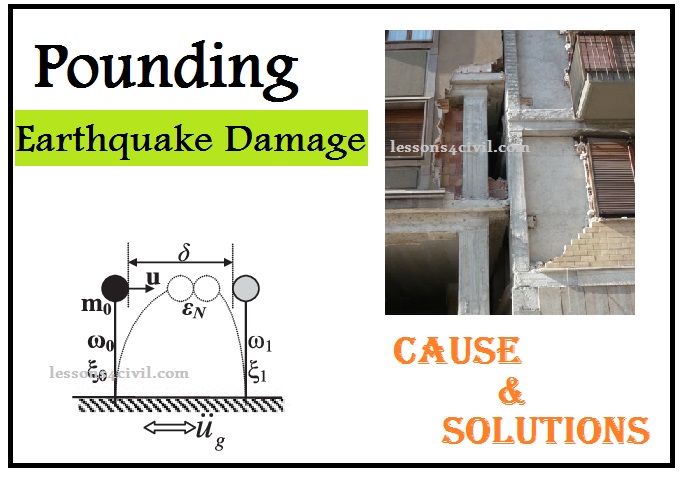Pounding of adjacent structures
What is pounding
As you know, when earthquake occurs buildings move. The response of each building is different from other depending on its stiffness, height, structural design and etc. Pounding is when the adjacent structure vibration extremely and strikes other buildings.
This can cause extensive damage or even collapse of structures. pounding has been one of the main causes of structural failure in several earthquakes.
How to prevent pounding
Providing a separation gap between two adjacent building is one effective technic to prevent the occurrence of pounding. However all codes have recommended the amount of separation gap for different buildings, many research are conducting to study this topic more precisely. The separation gap must be filled with low strength materials and not with mortar or concrete. this way, we can ensure that the separation gap functions properly during seismic excitations.
The recommended amount of separation gap
Generally the amount of separation gap is a function building height and its importance. According to some codes, no separation gap is needed for buildings shorter than 8 meters. India, Canada, Australia, Mexico, European and USA codes have some criteria for separation gap to prevent pounding. The equations recommended by each code is different from others. FEMA and UBC-1997 uses the SRSS (Square Root Sum Square) rule to define the amount of separation distance. Overall, separation gap is a function of the maximum displacement of each building. According to FEMA: 273-1997 (Federal Emergency Management Agency) it should be less than 4% of the building height. According to this code, pounding does not occur if the buildings are separated by a distance greater than or equal to si at any i level.
where:
∆2i1= Estimated lateral deflection of building 1 relative to the ground at level i
∆2i2= Estimated lateral deflection of building 2 relative to the ground at level i
The value of si calculated by this equation must be less than 0.04 times the height of the buildings above grade at the zone of potential impacts.
IBC-2009 and ASCE-7-10 provide another equation for separation distance as bellow:
Where, δMax is the maximum displacement occurs anywhere in a floor from the application of the design base shear to the structure. Cd is the deflection amplification factor and „I‟ is the importance factor for the seismic loading.



Comments